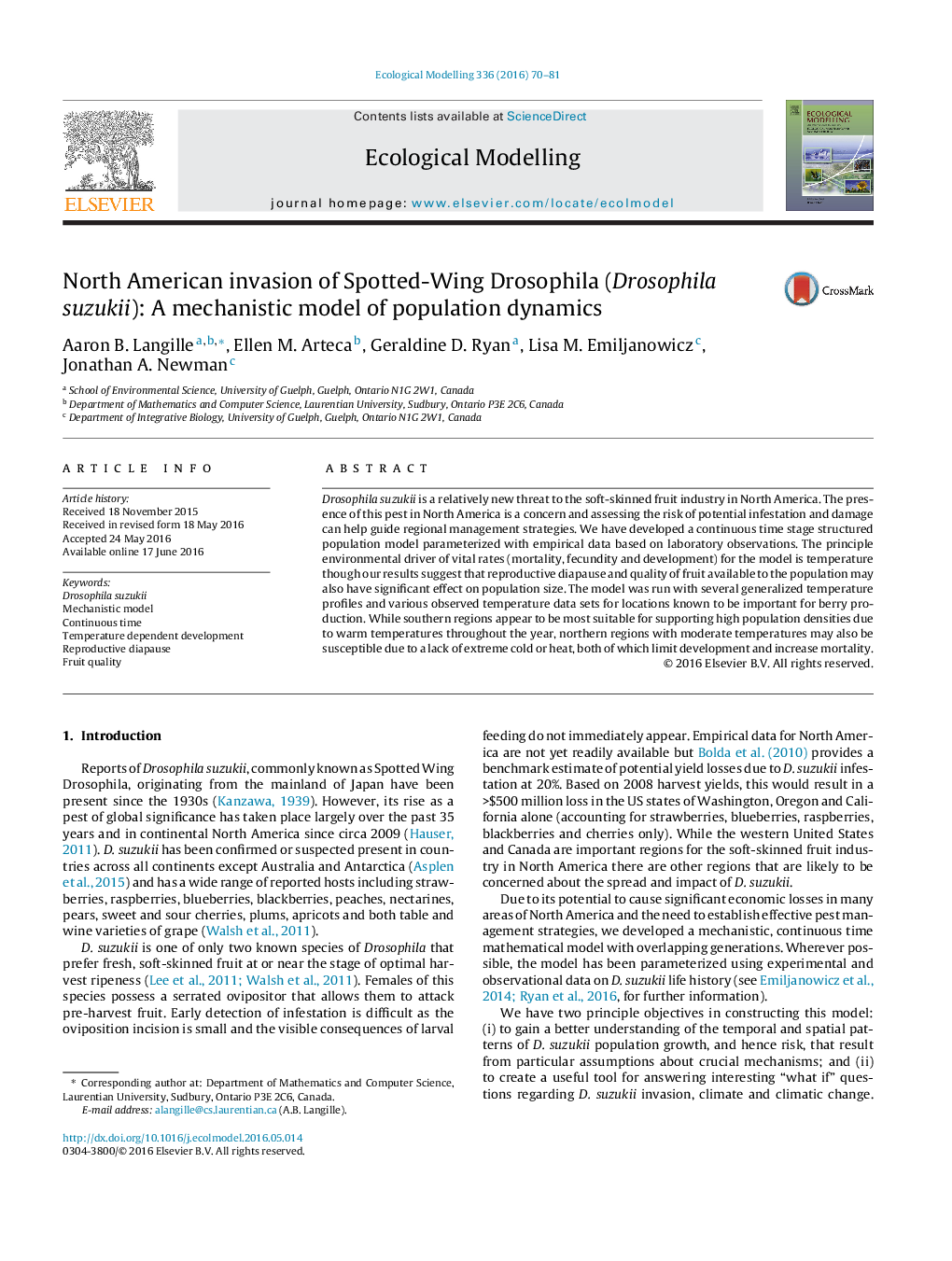| Article ID | Journal | Published Year | Pages | File Type |
|---|---|---|---|---|
| 4375522 | Ecological Modelling | 2016 | 12 Pages |
•A mechanistic continuous time model of Drosophila suzukii population dynamics is presented.•Temperature, reproductive diapause and host fruit quality influence population size.•D. suzukii infestation risk closely linked to local annual temperature profiles.
Drosophila suzukii is a relatively new threat to the soft-skinned fruit industry in North America. The presence of this pest in North America is a concern and assessing the risk of potential infestation and damage can help guide regional management strategies. We have developed a continuous time stage structured population model parameterized with empirical data based on laboratory observations. The principle environmental driver of vital rates (mortality, fecundity and development) for the model is temperature though our results suggest that reproductive diapause and quality of fruit available to the population may also have significant effect on population size. The model was run with several generalized temperature profiles and various observed temperature data sets for locations known to be important for berry production. While southern regions appear to be most suitable for supporting high population densities due to warm temperatures throughout the year, northern regions with moderate temperatures may also be susceptible due to a lack of extreme cold or heat, both of which limit development and increase mortality.
